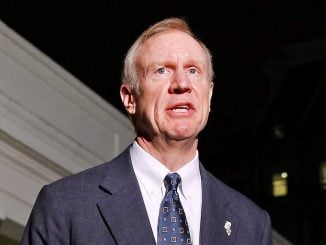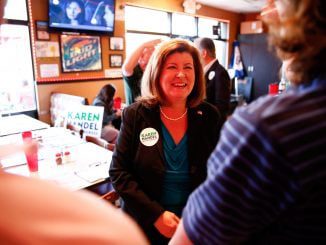
WASHINGTON, D.C. Emerging from the latest meeting of the Federal Reserve’s open market committee, which sets interest rate policy, Chairwoman Janet Yellen announced Wednesday that the world’s leading central bank would leave interest rates where they are. As such, the rate at which banks and credit unions lend money to other institutions overnight stays between 0.25 percent and 0.5 percent.If you are experiencing deja vu, don’t be alarmed: last December’s hike in interest rates has been the only such increase in more than a decade.”The Committee judges that the case for an increase in the federal funds rate has strengthened but decided, for the time being, to wait for further evidence of continued progress toward its objectives,” read the Fed’s official statement on the decision.In the post-meeting press conference Yellen said the committee has been encouraged by improving job numbers and their decision to hold rates near historic lows does not reflect a lack of confidence in the economy.However, that decision was not unanimous, as three Federal Open Market Committee (FOMC) members voted to raise the rates immediately. Similar hawkish sentiments expressed by Fed members in recent weeks roiled markets as investors had to recalculate just how likely a September hike could be amid a correctly suspected growing level of dissent among FOMC voting members.That notion was reflected in U.S. markets on Wednesday as they greeted the Fed’s decision to stay with a sigh of relief, pushing the S&P 500 index back toward record levels.While investors were relieved that the punch bowl of monetary stimulus won’t run dry quite as soon as feared, the reasons of such hesitancy to raise rates may belie Yellen’s reassurances on the economy.Recent softness in the manufacturing and service sectors, stubbornly low levels of inflation, and a fresh memory of how markets reacted last time the Fed raised rates may be tethering the central bank to emergency policies that were originally initiated to deal with the financial crisis of 2008.Though cheering a near miss this time, growing dissent in the Fed ranks has convinced markets that a rate hike is now a more likely result of the next FOMC voting meeting in December. Preceding that meeting is no less than a presidential election, the historically volatile Fall trading season, and all the unknowns of the increasingly precarious worlds of finance and geopolitics.



